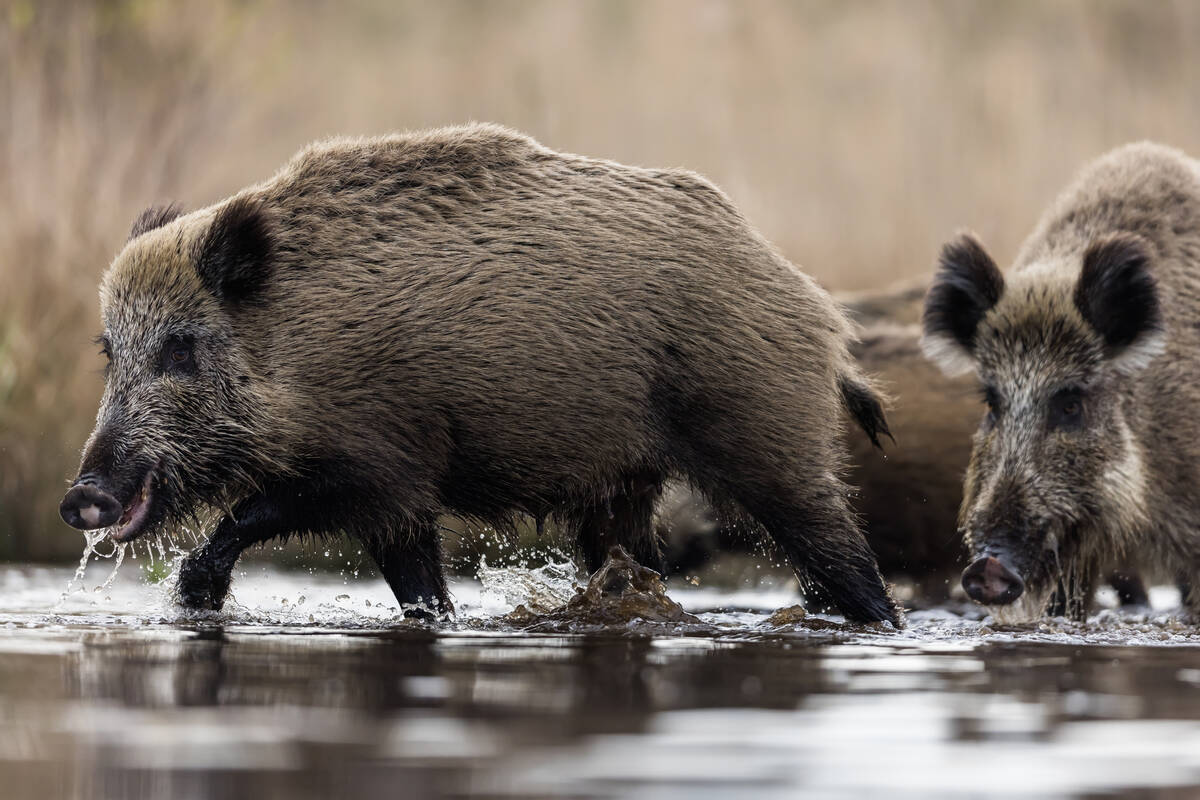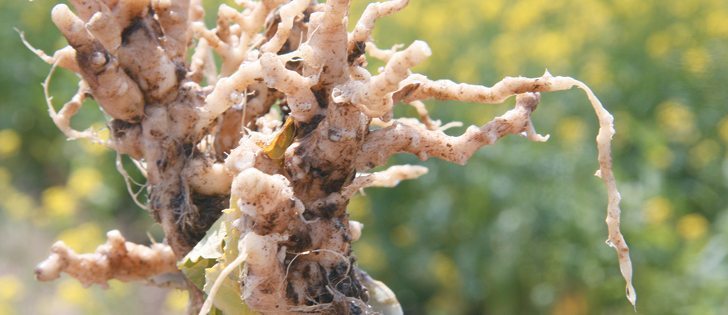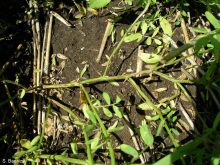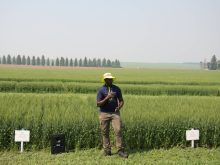Don’t panic yet | Cultivars still appear to be resistant in most fields, says agronomist
Alberta officials are investigating further evidence that existing clubroot resistant canola cultivars are vulnerable to a new strain of the disease.
The strain was discovered last year after materials were collected from six fields in the Edmonton area that showed higher-than-normal disease incidence.
From that, Stephen Strelkov of the University of Alberta was able to determine the presence of a new strain in one field.
Further survey work conducted this year identified more problem fields in the Edmonton area that were seeded to clubroot resistant varieties.
Read Also

Manitoba bans wild boar possession
Manitoba has tightened the regulatory status of Eurasian wild boar in an effort to help fight back against invasive wild pigs.
“There’s definitely some suspicion that there’s more fields where the resistance doesn’t appear to be as strong as expected,” said Dan Orchard, an agronomy specialist with the Canola Council of Canada.
The clubroot resistance trait has been available since 2009 and has performed well for farmers.
“They quickly became the most important clubroot management tool,” said Strelkov.
“In some cases, I would say the only clubroot management tool being used by some farmers.”
Spread of the soil-borne disease has been prolific, and many vectors have been identified, including trucks and soil.
Strelkov said during a canola in-dustry meeting in Saskatoon last week that clubroot has now been confirmed in more than 1,800 fields in 31 counties since it was first found in central Alberta more than a de-cade ago.
“The varieties are doing what they’re supposed to in terms of they’re resistant against what they’re bred to be resistant for,” he said in an interview.
“The only issue that we have happen is that by growing those varieties in a very short rotation in some fields, I think we’ve selected for strains of the pathogen that maybe were really present at very low levels.… We’ve shifted the pathogen population to make these new pathogens, these new strains more common or more prevalent.”
The farmer at the site of the confirmed case had been employing a two-year, canola-cereal rotation.
“From what the producer has told us to date is that it seemed to be the third time he went into clubroot resistant cultivar on this field that he had the issue with it,” said Maureen Vadnais, program manager with the Agriculture Service Board.
The site has several restrictions placed on it under the province’s Agricultural Pests Act.
Access to the field is restricted to the farmer, provincial officials and researchers, and strict cleaning protocols must be used when leaving the field, said Vadnais.
The field can still be farmed, but officials are enforcing a one-in-four year canola rotation.
“The farmer has been really excellent to work with, and we really appreciate his co-operation,” said Vadnais.
Strelkov is analyzing the materials collected from other fields this year. He said more information about the possible spread of the new strain should be available by spring.
Other work he’s done has identified that all western Canadian varieties are susceptible to the new strain.
An integrated management strategy is necessary to maintain resistance, he added.
Producers are encouraged to knock soil off vehicles leaving fields, clean equipment, plant resistant varieties and extend rotations in clubroot areas.
“I think it’s something to be concerned (about). I think there’s no need to necessarily panic right now because the resistance seems to be effective in most fields,” he said.
“If this were to become widespread or the resistance breakdown occurred in multiple fields over a large area, it might be difficult to get other products that have as good resistance.… We don’t want to go back to Step 1 again where we’re just recommending don’t grow canola. It’s the most important tool that we have and we certainly don’t want to lose it.”
Orchard said producers’ rotation decisions should depend on their location and field history.
“The guys that shorten the rotation, there’s opportunities if you’re not in a clubroot region and you haven’t had issues with blackleg and you’ve done your due diligence and you haven’t had that much canola on that piece of land,” he said.
Isolated incidents of clubroot have been found in Saskatchewan, Manitoba and North Dakota, but its presence has largely been contained to Alberta.
Shorter, two-year rotations aren’t always recommended but are commonly used by farmers in Western Canada. A field coming out of hayland without any cruciferous weeds and no history of canola is a good candidate for a shorter rotation, said Orchard.
“In a disease pressure area like the greater central Alberta, that’s not a recommended rotation, for sure, and if there’s clubroot identified on your farm, then it’s the one in four rotation that we think is much more sustainable and that’s usually the regulation and enforcement for most of the counties.”















